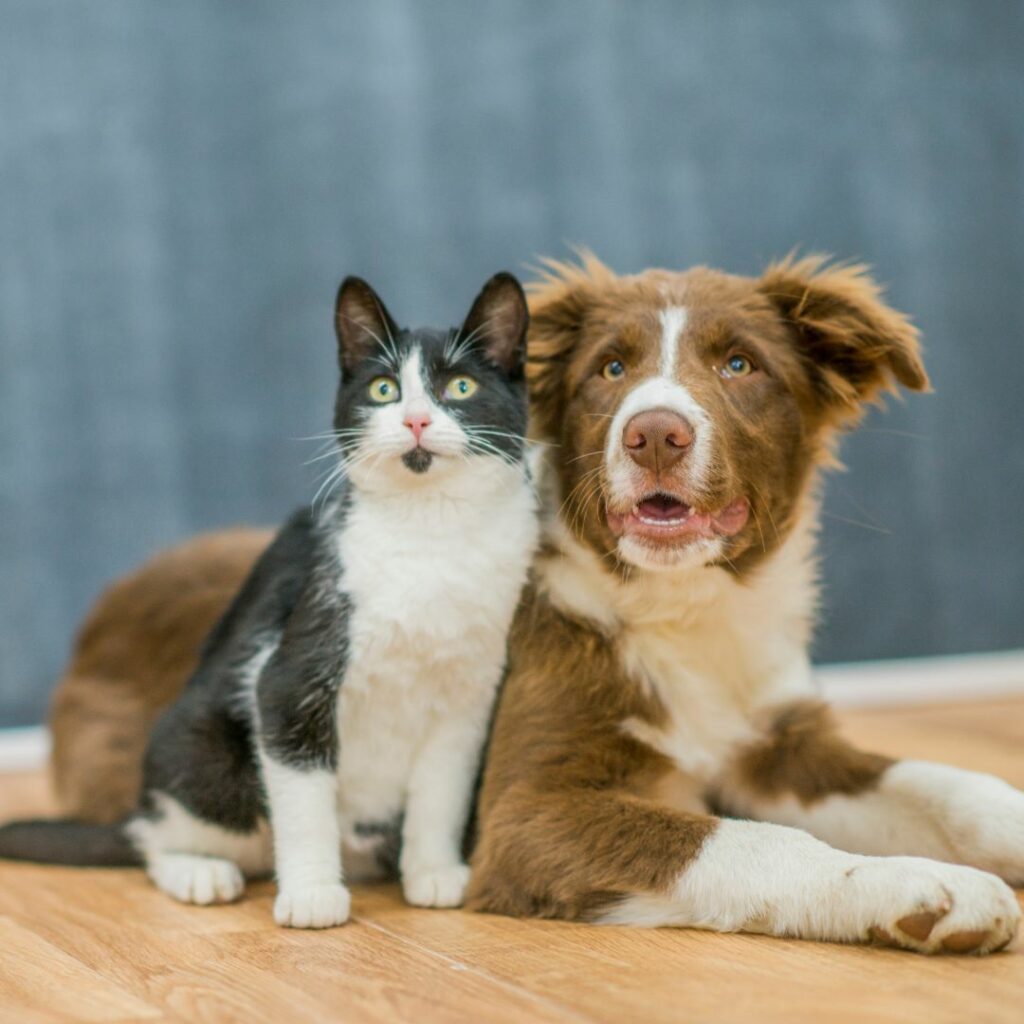There are dog people and there are cat people. Or at least, that’s the typical story, isn’t it? When in reality, those people are often the same people. Then there are the people who bring goats and chickens into the mix, but that’s another story. ((ha)) For now, let’s focus on introducing a cat or kitten to your dog.
In this scenario, we’re assuming your dog has never met a cat before and vice versa. Of course, sometimes there are cats that have been fostered with other animals and that would seem to make things easier — but not necessarily.
This all depends on the temperament of each animal and thus the care we take when introducing a cat or kitten to your dog.

Our goal here is to get to the sort of relationship that you see in that photo. And we can get there, for sure, but it takes planning, patience, preparation, and care.
Kitten/Cat and Young/Old Dog
Is there a difference? There certainly can be. A great combo can be introducing a kitten to an older dog. The kitten is open to anything (most often) and the older dog might not feel as protective of his space and might be energized by the introduction of that crazy kitten energy.
Notice we say might. Again, you have to know your dog, and hopefully you have a pretty good idea of the kitten’s personality. (As in the fact that most kittens are just fur covered crazy…in a good way.)
Regardless of the age of either, the following tips will definitely help.
If you’re new to kittens, here’s some tips to raise a well-adjusted cat.
Tips for Introducing a Cat or Kitten to Your Dog
Prepare your space
Make sure that you have an escape/hide-away sort of space for the cat. This should, of course, not be accessible to your dog. The cat needs a place where they can go and rest and recover.
Remember that this cat is not just meeting your dog but is also new to you and your home.
This safe area should be fully stocked with food, water, blankets, toys, litter box, and even a small box that they can hide in (whether it be their carrier or something else). This is where the kitten or cat will start to know your home as their home.
You might also consider creating a high-up sort of bed in this room. Being above their space can help a cat or kitten to feel even safer.
Timing of the introduction
If you can, time bringing the new cat or kitten home when you can have a few days off and be at home. You want to be able to monitor interactions. But also make sure you are paying enough attention to your dog so they don’t start to see the kitten or cat as competition.
And of course, play with the kitten to start developing your relationship.
First, only visuals
The best thing you can do is not just suddenly bring a cat/kitten home and plop it in front of your dog. Surprise! No. Don’t.
Ideally, have a screen/baby gate set up between two rooms that neither can climb and get over. Have them meet first through seeing and smelling.
Eventually, the meeting
The first time your cat or kitten meets your dog without anything between them make sure you have your dog on a leash. Just in case.
And don’t leave them alone. You’ll want to do supervised visits for the first few days, minimum.
Home Sweet Home
Eventually, these two (or more) will learn to not only get along, but in most cases, thrive together.
Remember that this takes a different amount of time for every animal. Your cat and dog might become best friends within a couple of days, where another cat and dog might take up to two or three weeks.
Patience, grasshopper.
If you’re having any serious issues, never hesitate to reach out to the excellent trainers at Sundance Retrievers.
